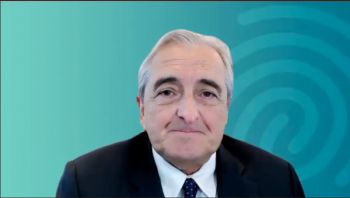
AI Meets Medicare: Inside CMS’ WISeR Model With Sanjay Doddamani, MD, MBA
Sanjay Doddamani, MD, MBA, a former senior advisor to the Center for Medicare and Medicaid Innovation, and internist and cardiologist by training, explains how the Wasteful and Inappropriate Service Reduction (WISeR) Model hopes to work, and addresses concerns about delays and denials from revamped prior authorization processes.
On June 27, CMS announced plans for its Wasteful and Inappropriate Service Reduction (WISeR) Model, which will see the Center for Medicare and Medicaid Innovation (CMMI) add artificial intelligence (AI)–powered prior authorization processes—while preserving physician judgment through human oversight—to services it deems of low value and prone to fraud abuse.1,2 These services include skin and tissue substitutes, electrical nerve stimulator implants, and knee arthroscopy for knee osteoarthritis.2 WISeR will target these services delivered to patients with traditional Medicare coverage, but even then, the model is only being tested in 6 states to start: Arizona, New Jersey, Ohio, Oklahoma, Texas, and Washington.1
This latest initiative to overhaul a process that has become a nightmare for many patients and providers alike comes on the heels of a joint announcement from HHS and CMS of a voluntary pledge for prior authorization reforms from more than 50 major health insurers.3
In this first part of his interview with The American Journal of Managed Care®(AJMC®), Sanjay Doddamani, MD, MBA, a former senior advisor to CMMI and founder and CEO of Guidehealth—also an internist and cardiologist by training—explains how the WISeR model hopes to work, and addresses concerns about delays and denials. He also emphasizes the model’s potential to reduce wasteful spending without compromising vital care, highlighting the delicate balance between streamlining approvals via AI and maintaining clinician trust.
This transcript has been lightly edited for clarity.
AJMC: The WISeR model aims to ensure individuals with original Medicare coverage receive safe, effective and necessary care, but if that is not the baseline expectation already, how does this initiative fundamentally change what we know is the status quo?
Doddamani: If you think about the way Medicare works, there has not traditionally been a place in original Medicare for processes that have a prior authorization associated with that side of, essentially, the US delivery system. But there’s always been a goal in Medicare to bring about and operationalize the goals of ensuring that we were aligning with best practices, being able to monitor for fraud, and certainly to eliminate low-value care.
Essentially, that in a nutshell, is where our biggest opportunity lies in using technology and innovation to provide a clinical oversight that is badly needed among patients with Medicare, to help protect the Medicare trust fund from improper payments, but also to improve the overall care delivery and restore the decision-making primarily at the physician level—to bring physicians back into the equation on the medical necessity of the very interventions. That’s why I’m most excited about this model. Of course, the devil is always in the details, but that’s kind of why I've been really interested in tracking this very closely.
AJMC: CMS plans to use AI and tech partners to expedite prior authorization review for low-value services. Given the recent HHS push to reduce prior auth delays in commercial insurance, Medicare Advantage, and Medicaid, could this inadvertently create new bottlenecks for patients who have original Medicare coverage?
Doddamani: From my perspective, there's never an environment with zero risk. The question is about how to mitigate risk and to bring about a level of clinical oversight that improves and promotes quality, reduces cost, or has some impact on either quality and cost without reducing quality and increasing cost. I see this as an opportunity for technology to expedite the decision-making, rather than being a barrier to the care model.
AJMC: At the same time,
Doddamani: One is, I’d love to see that the model is successful in testing the way AI can reduce unnecessary utilization, that it can slow unnecessary utilization—that's great—without slowing down access to vital care and care that is being carefully evaluated for real-world impact. The concern is valid. I think the credibility will depend on how transparent, how clearly these standards are established, and how much the provider judgment is preserved to override when necessary. Then, there are ways to avoid getting into a denials black box and pairing up smart technology, as long as we can escalate and have escalation pathways with human review, keeping in mind that we have an established mechanism that exists in Medicare Advantage, where there is a robust monitoring and prior authorization process, one that you could argue can also be optimized through the learnings that we can deliver through the WISeR model.
A way to think about it is, for seniors, is there a way to improve overall care, the quality of care delivered, reduce and eliminate waste and certainly fraud and abuse as well? And to do this where we're reducing low-value care continuously, rather than through retrospective review. This is a proactive opportunity, in the regions that have been chosen, to essentially target wasteful spending in a more continuous and digitally forward way. That's where I see great opportunity.
AJMC:
Doddamani: Firstly, I think there are a few unknowns here in terms of having a more accurate sense of the potential impact the WISeR model will have. At the very least it will reduce avoidable low-value care, and so that cannot be [underestimated] in terms of reducing the spending associated with this low-value care—that’s something that I’d like to wait until there's more information out there. In terms of using AI-driven prior authorizations, we’ve had actually good experience over the past year, since we have our own managed services organization that is doing this across other lines of business. And so I think we can cull inspiration and learning from where AI has been helpful to accelerate the adjudication, the clinical decisions and provide a platform for medical necessity reviews and escalation.
Remember, there are many opportunities to prevent unnecessary duplicative procedures and downstream care, and that's where this is a big opportunity. When well-leveraged, AI could appropriately, rapidly identify patterns, improve the adjudication processes, and use best practices governing these particular procedures so that we can bring more transparency and alignment with these best practices and evidence-based care so that we're really protecting patients from avoidable harm over and above the cited cost.
AJMC: Only 6 states were chosen to test the WISeR model: Arizona, New Jersey, Ohio, Oklahoma, Texas, and Washington. Where does the value lie in prioritizing and targeting low-value services in these states specifically, and what are some of those low-value services?
Doddamani: In CMMI models, there are geographic regions in some of them that are chosen. In keeping with designing a well-scoped-out model test, targeting states with diverse demographics and other care patterns and service utilizations, I think, were probably taken into consideration in establishing those target states. In terms of the actual procedures, whether it’s arthroscopy or nerve stimulators, there is very strong evidence of limited benefit for some patient types, and rather limited benefit for patients in particular—making this an ideal test for the use of AI, especially for [lower] risk. I think this is why they chose these particular low-value services, or bucketed them under the rubric of low-value services. While there may be some benefit in some specific patient indications for these procedures, they’re going to sort of be targeted to make sure that they're matching in terms of appropriateness and without compromising the care needed to support these patients.
AJMC: The WISeR Model introduces AI-assisted prior authorization—as well as the use of machine learning and human clinical review—for select services in original Medicare, aiming to reduce wasteful care while maintaining clinician-led denials. How do you anticipate this will impact provider workflows, especially with the optional submission pathway and potential future exemptions for high-compliance providers?
Doddamani: Today, we have an established approach from a provider workflow perspective in terms of seeing patients, making diagnoses, making recommendations, having specialists weigh in, and then providing certain interventions and procedures. The pathway to choose and work through in this, when well thought through and streamlined from a compliance perspective, is to keep the providers in the loop. You’re going to reduce friction and reinforce best practices at that physician level. Having a direct feedback loop to the providers is going to be important.
Having an optimal submission pathway, having some exemptions and smart levers involved to give the clinicians and patients the flexibility that’s needed to focus on those occasional outliers, so that they can receive the care that they need, and at the same time provide the much-needed attention to reducing avoidable harm and reducing avoidable costs, I think that’s where keeping it very tied to existing workflows is important. And that’s where AI can be great in quickly adjudicating where these outliers exist and where there are indications for these procedures. We’re not talking about eliminating these procedures altogether. We’re talking about rationalizing the procedures that were described on the list to align with the best practices and evidence base out there.
References
- CMS launches new model to target wasteful, inappropriate services in original Medicare. News release. CMS. June 27, 2025. Accessed July 17, 2025.
https://www.cms.gov/newsroom/press-releases/cms-launches-new-model-target-wasteful-inappropriate-services-original-medicare - Vogel S. CMMI to add prior authorization for some Medicare services. Industry Drive. July 1, 2025. Accessed July 17, 2025.
https://www.healthcaredive.com/news/cmmi-prior-authorization-medicare-model/751985/ - Shaw M. From red tape to relief: rewriting the rules of prior authorization. AJMC. June 23, 2025. Accessed July 17, 2025.
https://www.ajmc.com/view/from-red-tape-to-relief-rewriting-the-rules-of-prior-authorization
Newsletter
Stay ahead of policy, cost, and value—subscribe to AJMC for expert insights at the intersection of clinical care and health economics.





























































